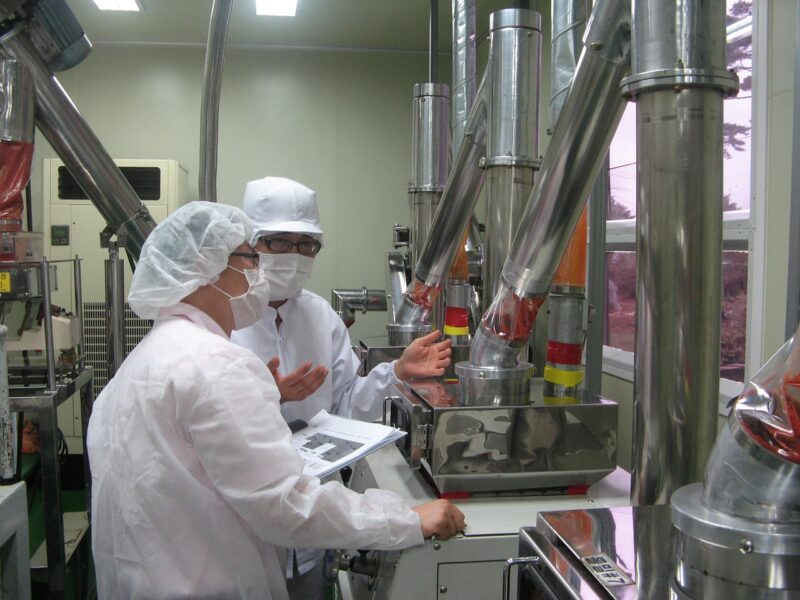The Strange Ingredients Found in Processed Foods You Didn’t Know About
November 13, 2024

Processed foods are ubiquitous in modern diets, laden with additives and preservatives designed to enhance flavor, texture, and shelf life. While convenience is one of the primary reasons people gravitate towards these foods, many aren’t aware of the unusual ingredients lurking in the packaging. In this article, we will uncover these strange components, their purposes, and potential health implications.
1. What Are Processed Foods?
Processed foods are any food items that have been altered from their natural state, often through the addition of ingredients. This can range from simple processes like freezing or canning to more complex methods involving the incorporation of various additives. Many people enjoy processed foods for their convenience, shelf stability, and extended flavors. However, understanding what goes into these foods can help consumers make more informed decisions.
Common categories of processed foods include:
- Canned Vegetables and Fruits: Often packed in syrup or brine.
- Snack Foods: Chips, cookies, and crackers that frequently contain preservatives.
- Frozen Meals: Pre-packaged and ready-to-heat options packed with various additives.
- Processed Meats: Such as sausages or deli meats containing nitrites and other preservatives.
Understanding processed foods starts with recognizing the numerous ingredients that may not be desirable for consumption. Often, these items are included for reasons beyond the immediate culinary experience.
2. Strange Ingredients and Their Purposes
Many processed foods contain unusual additives. Here are some of the more startling ones:
– Titanium Dioxide: This chemical is used as a whitening agent in various food products, from candies to salad dressings. Although considered safe in small quantities, higher concentrations could result in health issues.
– Propylene Glycol: Commonly found in ice cream and salad dressings, propylene glycol is a synthetic liquid used as a humectant to keep foods moist. In large quantities, it can cause nausea and other ailments.
– E339 – Sodium Phosphates: Often found in processed cheeses and baked goods, these additives help improve texture and increase moisture. Excessive sodium phosphate consumption can pose risks to kidney function.
– Carboxymethyl Cellulose (CMC): Used as a thickening agent and stabilizer in processed foods, CMC has been under scrutiny for potential links to digestive issues. It’s found in a vast array of items like low-fat ice creams and gluten-free products.
– Artificial Colorants (like Red 40, Yellow 5): Used to enhance or create appealing colors in food, these artificial dyes have been linked to hyperactivity in children and possible allergic reactions in sensitive individuals.
– High Fructose Corn Syrup (HFCS): A common sweetener in processed foods, HFCS has been linked to obesity and various metabolic disorders.
– Sodium Benzoate: Often found in soft drinks and acidic foods, sodium benzoate acts as a preservative but can form benzene, a carcinogen, under certain conditions.
These ingredients serve various purposes including stabilization, preservation, and flavor enhancement. However, not all of them are beneficial for human health, and some are still being studied for long-term effects.
3. The Impacts on Health
Understanding the potential impacts of these strange ingredients is crucial for informed dietary choices. Here are some health effects associated with frequent consumption of processed foods:
– Weight Gain: Ingredients like HFCS and trans fats are linked to increased fat storage and obesity.
– Digestive Issues: Additives such as CMC can disrupt gut health and contribute to gastrointestinal discomfort.
– Allergic Reactions: Artificial colorants and preservatives can lead to allergic responses in sensitive individuals.
– Increased Risk of Chronic Diseases: Studies have shown a correlation between diets high in processed foods and instances of heart disease, diabetes, and certain cancers.
Maintaining a diet low in processed foods may therefore reduce the risk of these health concerns. It is advisable to read food labels and choose items with fewer and more recognizable ingredients.
4. Reading Labels for Better Choices
Processing often leads to intricate ingredient lists that can confuse many consumers. Here are some tips for efficient label reading:
– Start with the Ingredients List: Look for products with pronouncing ingredients. If you can’t read it, it may not be worth eating.
– Recognize Red Flags: If sugar or sodium is one of the first three ingredients, consider it a highly processed food.
– Avoid Artificial Additives: Prioritize products with natural preservatives rather than artificial ones. Look for terms indicating minimal processing.
– Beware of “Fat-Free” Products: These may contain added sugars or unhealthy fillers to compensate for flavor. Sometimes, the reduction of one ingredient leads to the addition of another that can be worse for health.
By being diligent about label reading, you can make smarter dietary choices and minimize your intake of undesirable components.
5. Making Healthier Choices
It’s entirely possible to maintain a healthy lifestyle while still enjoying the convenience of processed foods. Here are some strategies to consider:
– Opt for Whole Foods: Whenever possible, choose fresh fruits, vegetables, nuts, and whole grains. These options are generally nutrient-dense and free from strange additives.
– Cook at Home: Preparing meals at home allows you to control the ingredients and avoid unnecessary additives. Experiment with simple recipes that utilize whole components to enhance your meals.
– Choose Cleaner Brands: Some brands specialize in fewer additives and more organic ingredients. Look for these on grocery shelves to find products that align with your values.
– Plan Ahead: Incorporate planning into your weekly routine. Meal prep can reduce the temptation to choose overly processed convenience options in favor of healthier homemade alternatives.
With awareness of what goes into processed foods, it’s easier to maintain a balanced diet that limits the intake of strange ingredients.
Conclusion
The world of processed foods is filled with ingredients that may surprise you. Many promising taste and convenience come at the cost of strange additives that can impact your health in the long run. By understanding what’s in your food and making informed choices through label reading and the selection of whole food options, you can improve your dietary habits and support your well-being. The next time you reach for that processed snack, consider the ingredients, and ask yourself whether it’s worth it. The journey toward better health begins with knowledge in choosing what we consume daily.







